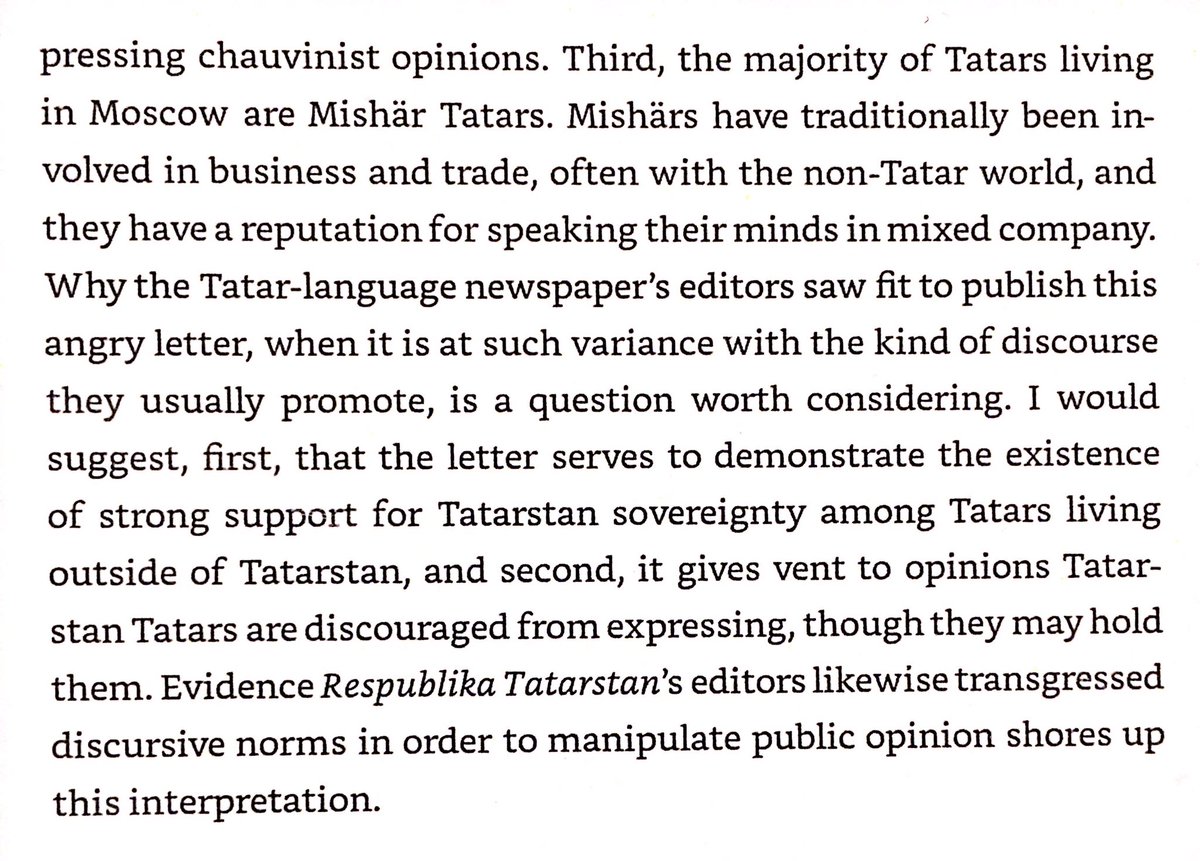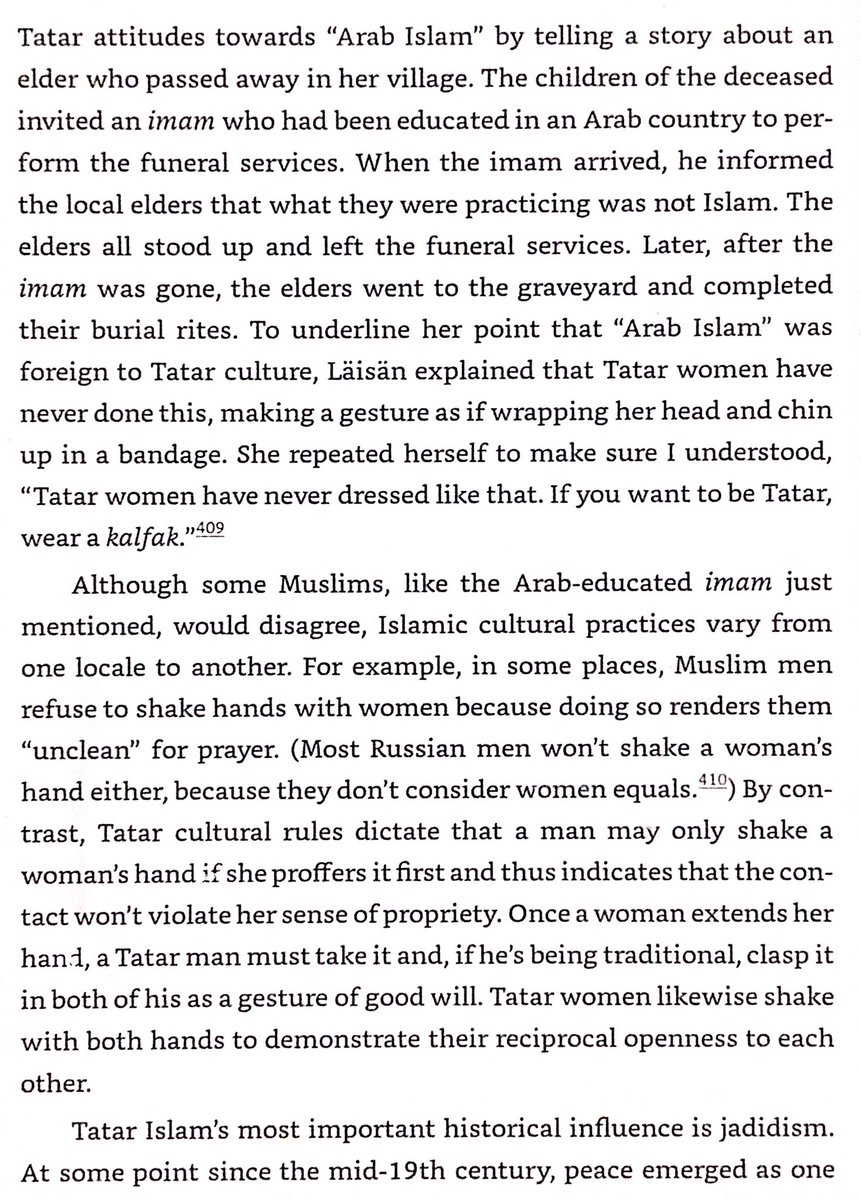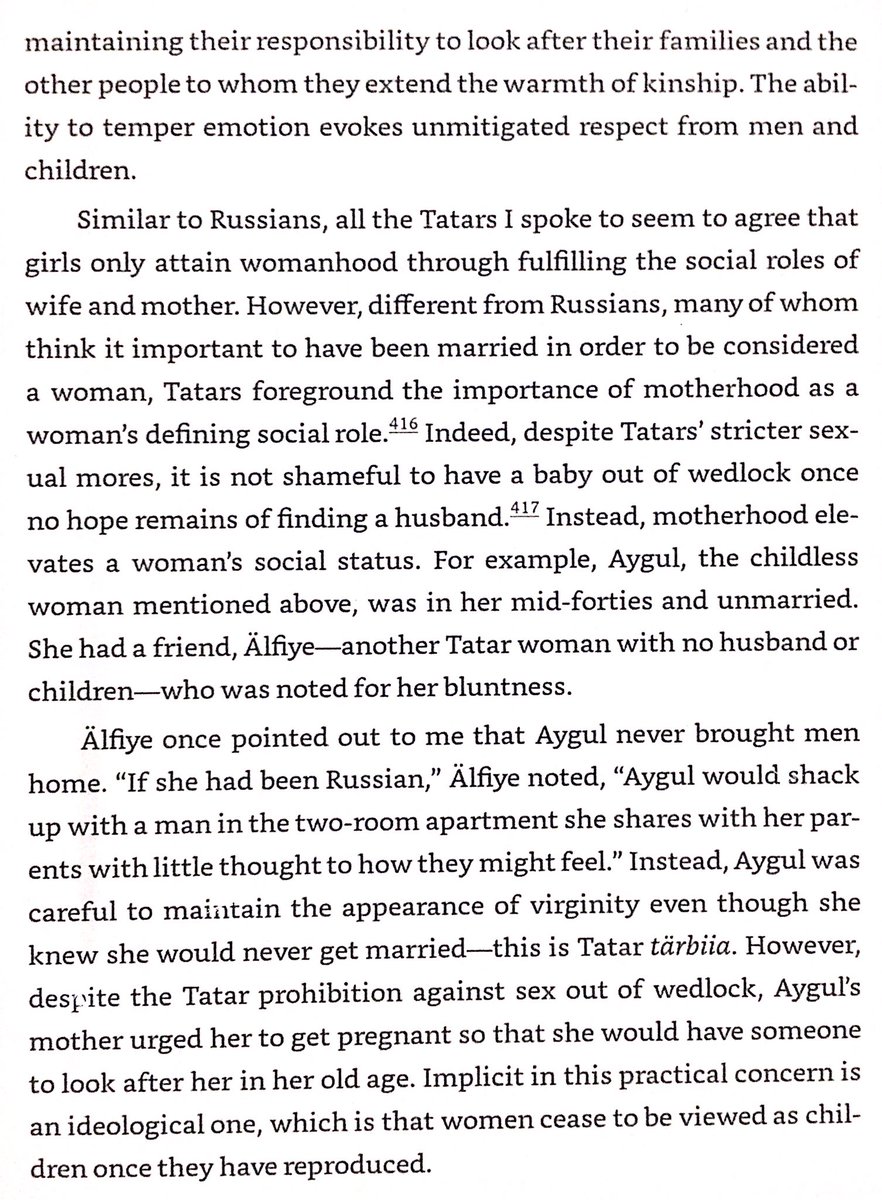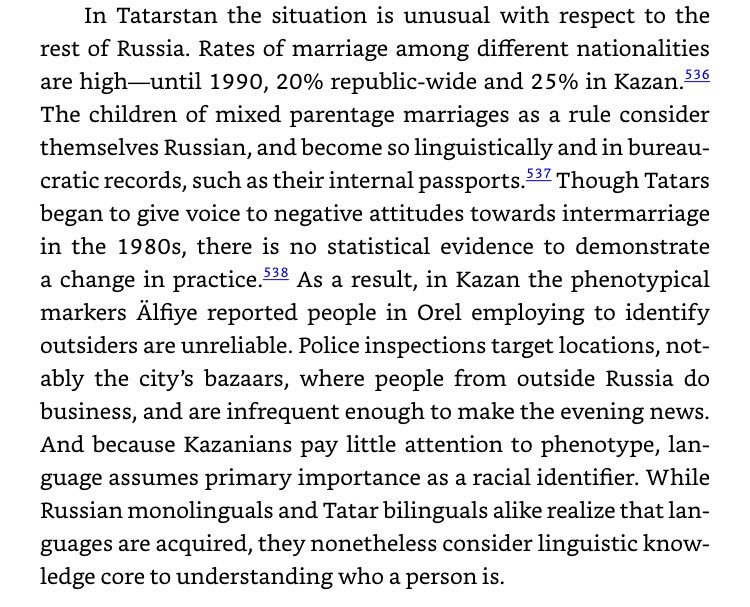Thread with excerpts from "Nation, Language, Islam: Tatarstan's Sovereignty Movement" by Helen M. Faller 

Volga Tatars claim descent from Khanate of Kazan & medieval Volga Bulgaria. Author believes that makes Volga Tatars indigenous to the region (I am skeptical, & strongly suspect that Chuvash are actually the heirs of Volga Bulgaria). ncbi.nlm.nih.gov/pmc/articles/P… 

USSR was comprised of 15 union republics, some which had autonomous republics under them. Tatarstan was an autonomous republic, but not a union republic under the USSR, though some Tatars tried to elevate its status. In 1991 all the union republics became independent states. 



Tatars have been about half the population of Tatarstan for the last 30 years. Tatarstan declared its sovereignty in 1990, & refused to accept the results of the 1991 presidential election. 61.2% of voters voted yes in a 1992 referendum on Tatarstan’s sovereignty. 



After the Russian conquest of Kazan, they banned Tatars from living in city limits or engaging in trade. Trade restrictions were lifted for Christian Tatars in first half of 17th century. 



Catherine the Great was the first Russian ruler who was fairly tolerant of Tatars. To build class solidarity among the nobility of the empire, she allowed stone mosques to be built & ended a policy encouraging religious conversion. 

https://twitter.com/Peter_Nimitz/status/1232927379305058304


Jadid movement arose among Turkic peoples in Russian Empire in 19th century. It promoted education and was sympathetic to pan-Turkism & an Islamic revival. Discrimination against Moslems was gradually rolled back after 1854. 



Pre-1917 Tatar literacy is debated. Mullahs & their wives ran private & Jadid-influenced but affordable schools that taught Tatar & Arabic, but quality was variable. The Russian government funded Tatar language schools, but only for Christians. 



https://twitter.com/mirchond/status/1400562189405233152?s=46&t=g1_4HVMLH-bK7t4MCVkNsA




Tatars still have a widespread custom of proper posture & address. Uncommon in America, but some older Presbyterians in western Pennsylvania taught a very similar system when I was boy. 



Schools are important in developing an ethnic identity in Tatarstan, with students attending Tatar schools more likely to identify as Tatars. In Soviet period most Tatars schools were in villages, but in 1994 Tatarstan instituted a bilingual education system. 





Mir Said Sultan-Galiev - Tatar Bolshevik who was a sort of a pan-Turkist & what today would be thought of as a Third Worldist. He was arrested in 1929 & executed in 1940 as an anti-Soviet nationalist. 





Authoress compares the position of Russians in the post-WWII USSR to that of Whites in the United States in 2011. They were seen as having transcended their national culture & lacking an ethnicity, but their views were seen as normative. 



Unlike in America, children born of mixed-ethnic unions in Russia identify their ethnicity with the majority. 

Tatar culture is seen as folksy & associated with romances & an idealized village life by Tatars. Higher culture is entirely in Russian, and is seen as universal, driving assimilation into Russian culture. 







Tatar women wore fur hats in Kazan as late as the 2000s. By the time I went to Kazan fur had fallen out of fashion, and everyone (Tatar, Russian, Caucasian, and Uzbek) wore synthetic hoods or hats (hoods were more popular, but Kazan was just above freezing when I visited). 

Tatars outside Tatarstan were not part of a community that had a stake in local politics, so were more assimilatory or exclusionary than Tatars in Tatarstan. Tatars who wanted to annex neighboring regions were unpopular & viewed as dangerous radicals by both Tatars & Russians. 







In another parallel to America, the most notable Tatar nationalist writer is a woman.
Soviets created different Cyrilic alphabets for different Turkic languages - even those closely related. While some Turkic peoples could talk to each other, few read other Turkic books. The new alphabets also broke ability of Turkic peoples to read old texts in their languages. 



Gulf Arabs had little influence on Tatar practice of Islam in 1990s and early 2000s. Islam was seen as necessary for virtuous living, & believed to protect against social ills such as drug use & STDs. 







Russians are seen as morose, Tatars as taciturn, & Chechens as passionate. It is not seen as shameful for older Tatar women to be single mothers - only younger Tatar women. Tatar nationalist Bayramova is unpopular in part because she is seen as unladylike. 







Some Tatar academics & politicians lied about archaeological finds of Tatar soldiers who were killed in the Fall of Kazan in 1552 to keep community peace. Popular historians however could tell the truth. 







Tatars have some folk memory of their Udmurt ancestry, although they associate it with the Volga Bulgars. 



20% ethnic intermarriage rate in Tatarstan in 1980s, although intermarriage began to be seen negatively by some Tatars in 1980s. 

Bashkiria is 24% Tatar. Bashkiria pushed Tatars to identify as Bashkirs in Soviet times to justify their state affirmative action funding. Some Tatars see Bashkirs as inferior Asiatics who are different from European Tatars. Other Tatars believe Bashkirs aren’t a real ethnicity. 







Some Russians outside of Tatarstan aren’t aware that Tatars exist & confuse them for Jews or Arabs. Uzbek and Tajik immigrants to Russia often view Tatars as the same as Russians, in part due to Tatar involvement in Russian colonization of Central Asia. 



• • •
Missing some Tweet in this thread? You can try to
force a refresh









































